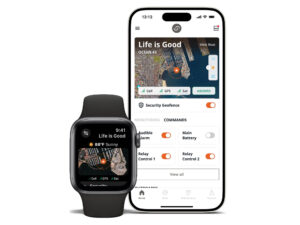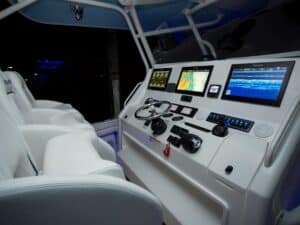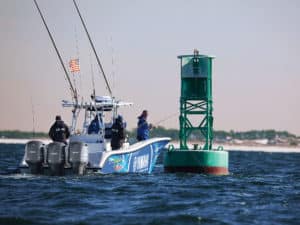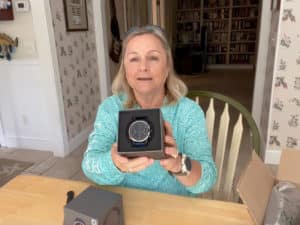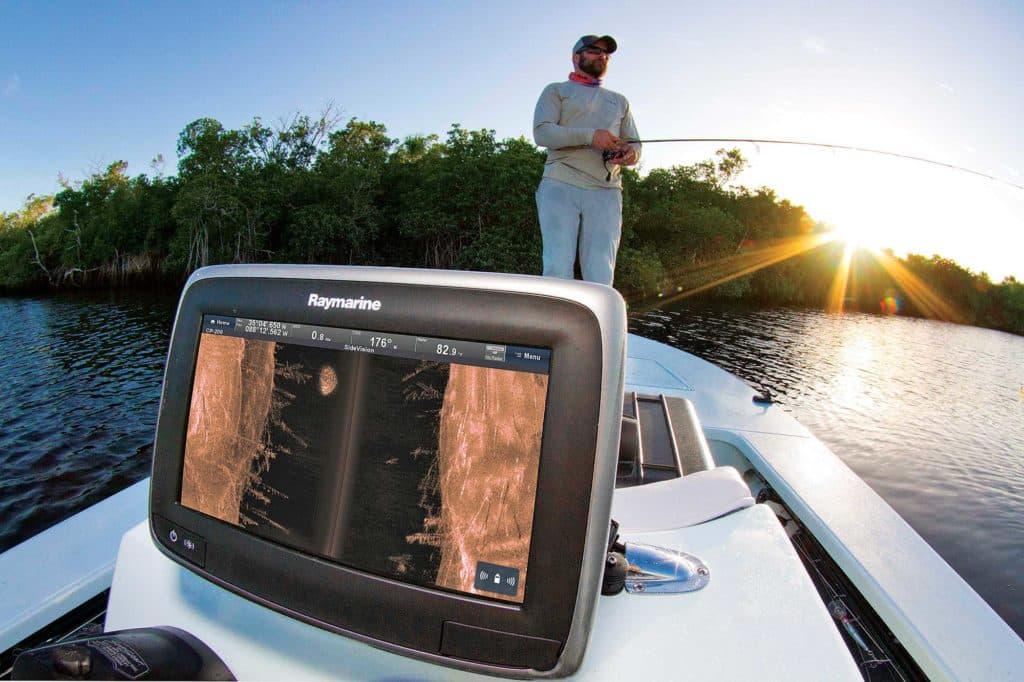
Just because your boat might be a bay or flats skiff, or even a kayak, does not mean you must miss out on the latest technology. In fact, some of the most innovative marine-electronics products today fit the small-boat market almost exclusively.
For instance, Garmin designed its new Panoptix LiveScope, the first-ever real-time scanning sonar, for nearshore coastal markets. The system delivers a videolike view of what’s beneath the boat that is so clear anglers can identify individual fish species.
To provide small-boat anglers advice on choosing inshore electronics, I asked experts which product types should top the priority list. Here are their suggestions (gathered alphabetically by brand name).
Furuno
While Furuno is best known for its offshore electronics packages, the company says its GP1871F (7-inch) and GP1971F (9-inch) combo units work well for inshore anglers. Both feature multitouch displays with a GPS/WAAS chart plotter plus chirp and conventional fish finders.
“Certain features can help find the best fishing grounds, depending on species,” says Savannah, Georgia, Capt. Sean Gill. “Some of the features that you want to look for are water temperature (either from a sensor on your transducer or through a weather service). Another is [Furuno’s] bottom-discrimination feature to find low-relief areas.” Easy add-ons include Furuno’s DRS4W wireless radar, if your vessel is equipped with a T-top or hardtop. The DRS4W will overlay onto charts on the main display unit or network with an iPhone or iPad.
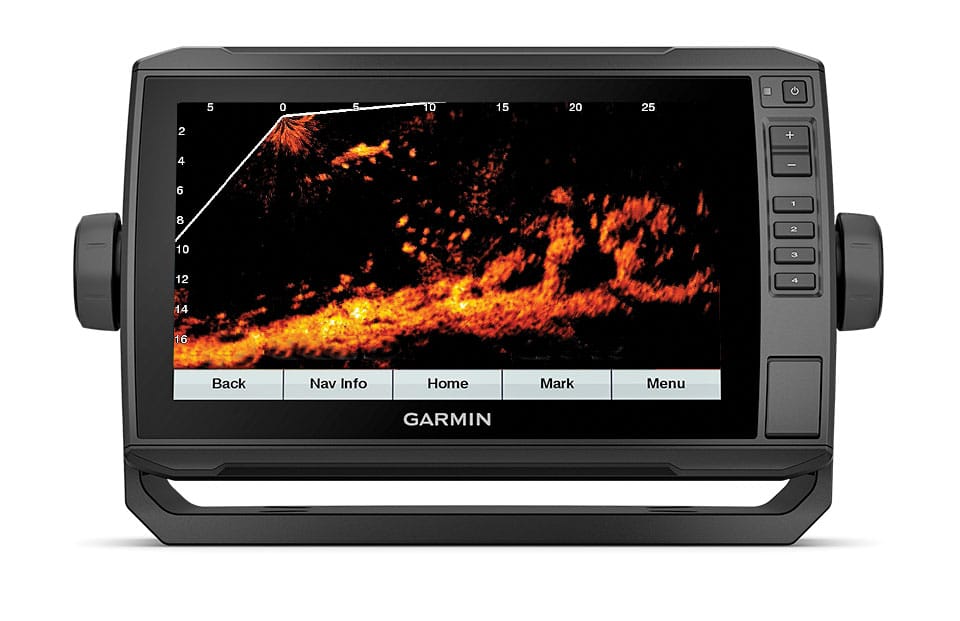
Garmin
David Dunn, Garmin’s director of marine sales and marketing, says he’s seeing ever-larger displays mounted on inshore and nearshore boats. “Builders are making consoles larger to accommodate larger screens,” he says. “These days, it’s certainly not uncommon to see a 16-inch display or two 12-inch displays on a bay boat. It all comes down to what you can fit and how much you want to spend.”
Dunn says sonar and GPS rank as the top-two needs for inshore anglers. Sonar, obviously, to find fish, and GPS “because you can mark your dock and your favorite spots, and you don’t have to worry about getting lost.” GPS also allows you to pinpoint your exact location in case of emergency.
Garmin’s new inReach Mini is a good option as a backup GPS and as a method to trigger an SOS, he suggests.
“The hottest setup we have right now is the GPSMAP 1242xsv Touch, a full-function 12-inch MFD that comes with built-in 1-kilowatt chirp sonar and chirp ClearVu and SideVu scanning sonars,” he says. “It comes with BlueChart G2 cartography, and it’s also compatible with Panoptix.”
Read Next: Garmin Panoptix LiveScope On-Water Demo
Panoptix adds 3D technology to sonar, particularly with the introduction of LiveScope. “Traditional sonar is literally history, and shows you where the fish were when your boat passed them,” he says. “Panoptix is game-changing.”
Dunn also recommends that inshore anglers use the Active Captain app, which networks with Garmin plotters. “You can use it to pre-fish and mark points that will automatically upload to your Garmin plotter through your smart device. You will also have a backup for your coveted fishing spots.”
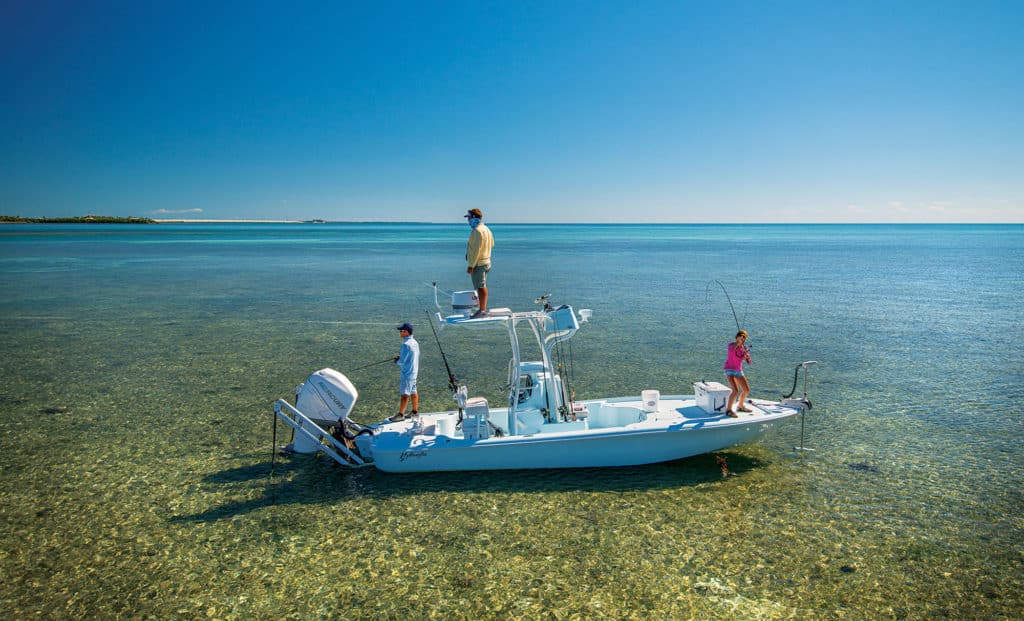
Lowrance
“All inshore flats boats and skiffs or even shallow-running bay boats need a unit compatible with good charts,” says Daren Cole, global marketing director for Lowrance. “The charts need to have a way to create a plot trail that can be saved and used again on your next trip.”
Fishing backcountry regions means working with tides that can change the look of winding shallow creeks at various stages, he adds. An inshore plotter should also allow aerial photographic overlays, particularly for locations that are not well-mapped.
“Side- and down-scan [sonar] views can help in shallow situations. It can be invaluable for finding redfish or snook hanging under a dock, around jetties, in ditches and sloughs, as well as around rock and structure,” he says. “Lowrance side-scan has incredible range. It can help you check out those easy-to-spook tarpon lurking in the pot holes and mangroves without disturbing them.”
Cole also recommends that inshore anglers opt for in-hull or shoot-through-the-hull transducers for tracking bottom at high speeds and making frequent low- and high-speed turns. Add to that a transom-mount imaging transducer for low-speed prospecting.
Finally, a VHF marine radio and antenna are necessities. Today’s units integrate with multifunction displays and allow distress calls and AIS for safety.
Those with trolling motors should opt for units such as the Elite-Ti and HDS models that can link to a MotorGuide Xi5 trolling motor for seamless control. Additional options include installing an NMEA 2000 network to monitor engine data and fuel use, a WM-3 Sirius module and subscription for weather information, and a Point-1 Heading Sensor to ensure that the boat direction indicated by the arrow on the display is always matching the actual direction of the front of the boat while drifting.
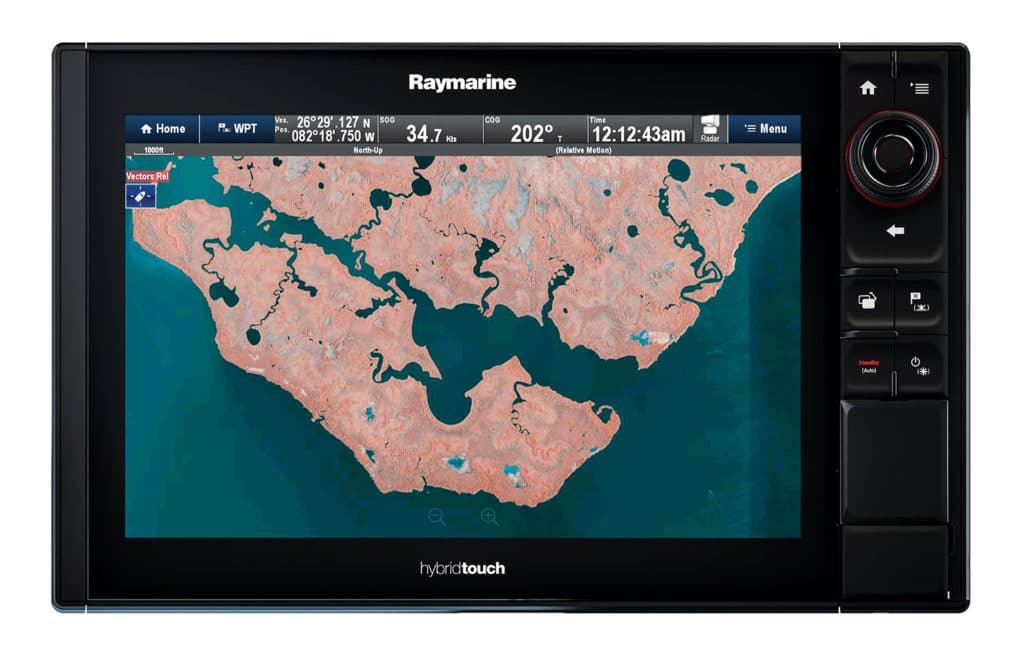
Raymarine
Inshore anglers need a chart plotter or app with satellite-image overlay, side-scanning sonar, and multifunction displays with super-bright and/or IPS displays, says Raymarine marketing manager Jim McGowan. “Having the ability to run a track line on a satellite map is key to fishing the flats and backwater,” he explains. “The charts alone are good, but nothing beats the satellite image to be able to see the flats, sandbars, islands and channels.”
Side-scan lets anglers image much more area than downward-looking sonar. Today’s units offer incredible detail and clarity at a distance farther than anglers can cast. Bright displays are important because many smaller boats lack T-tops. IPS displays also offer broader viewing angles and are viewable through polarized sunglasses. Raymarine’s Axiom RV (RealVision) units support a wide variety of chart brands with satellite-overlay options, including Standard Mapping’s super-high-resolution aerial charts (Southeast only), McGowan says. In addition, RealVision 3D sonar provides chirp SideVision, capable of reaching out to 300 feet port and starboard in water as shallow as 1 foot deep. It also provides chirp DownVision, chirp traditional sonar and stabilized 3D views.
Transducers
Sonar units need transducers to function. Airmar Technology has some general recommendations for inshore/nearshore vessels that pair with many common multifunction displays.
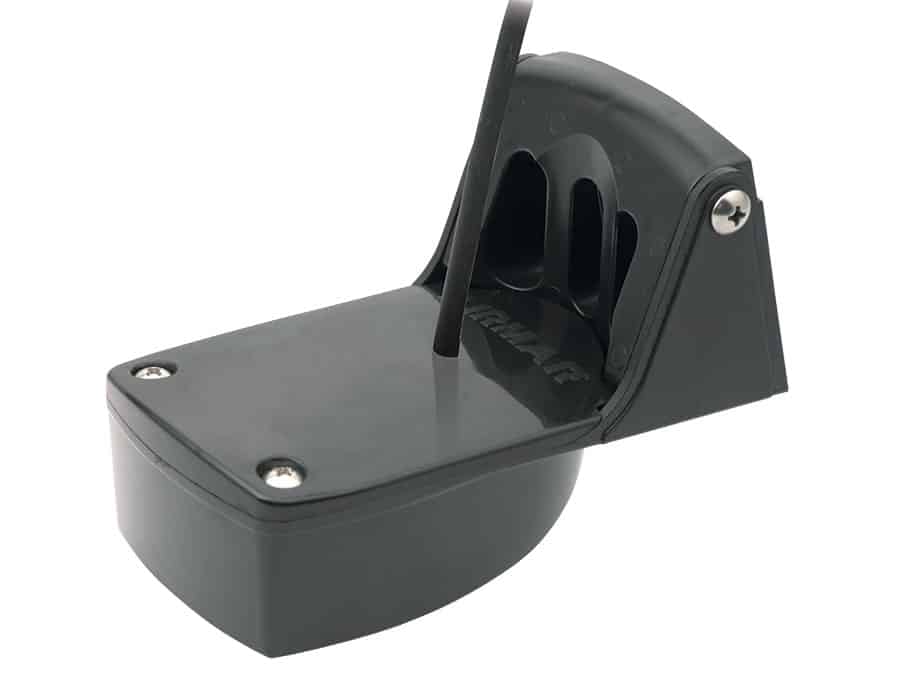
Good
This medium-frequency chirp‑ready transom-mount unit is budget friendly. The 300-watt transducer covers the 95 to 155 kilohertz band with beam widths from 26 to 17 degrees, offering good bottom coverage and shallow to mid-depth performance. Courtesy Airmar
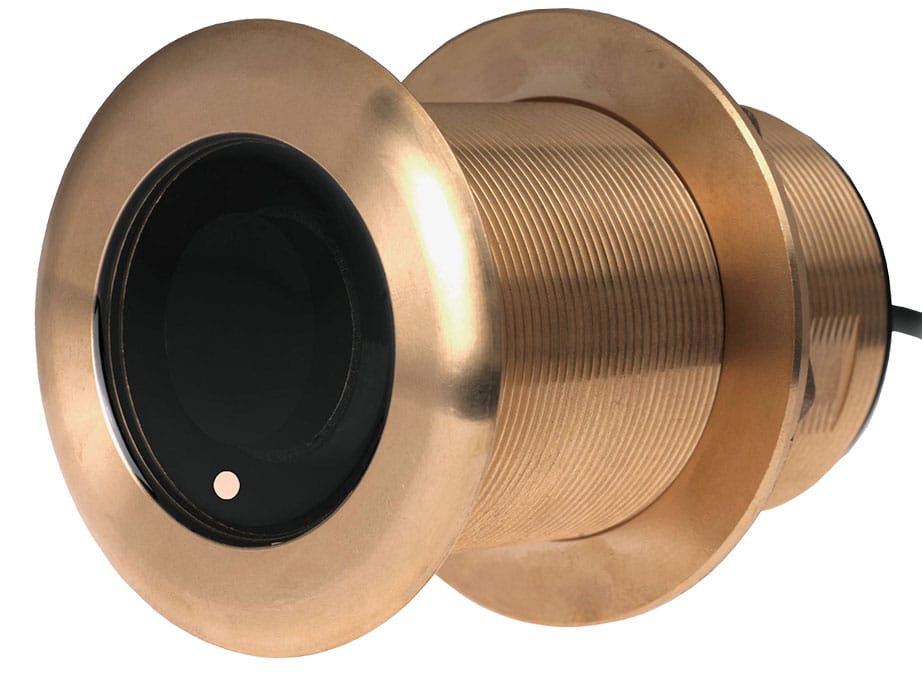
Better
A 600-watt tilted-element, through-hull transducer that covers the 130 to 210 kilohertz high-frequency band, with beam widths from 15 to 9 degrees, this chirp-ready unit provides detail of fish holding close to structure and the bottom. Courtesy Airmar
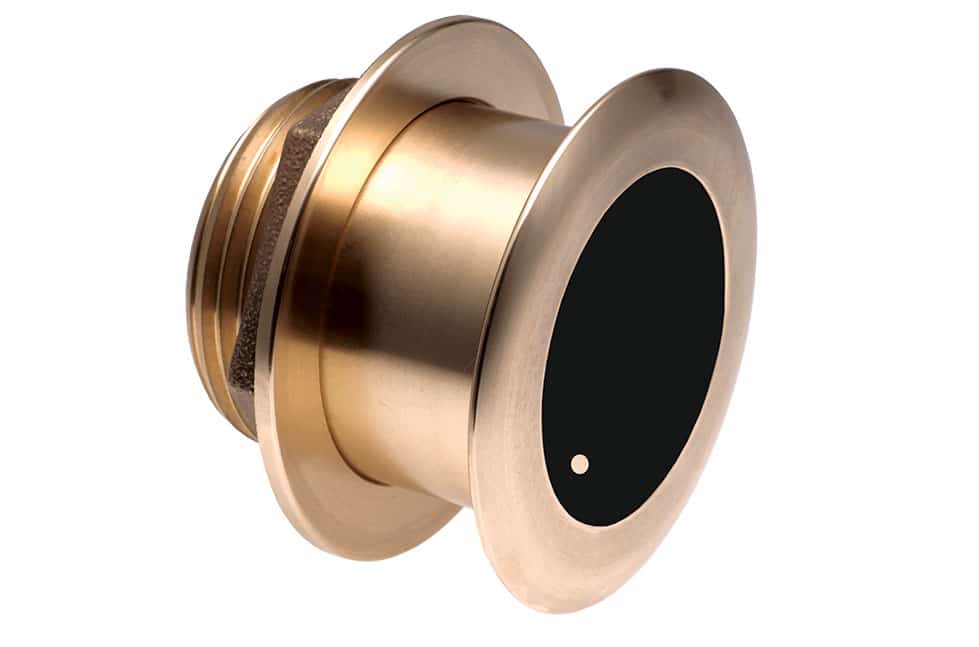
Best
With a constant 25-degree beam in a high-frequency band (150 to 250 kilohertz), this option provides optimal detail of the bottom, fish and baitfish around structure, plus a coverage area roughly 22 feet in diameter at 50 feet of depth. A power rating of 1 kilowatt means more power on target (sounder dependent) for even greater detail. Courtesy Airmar

